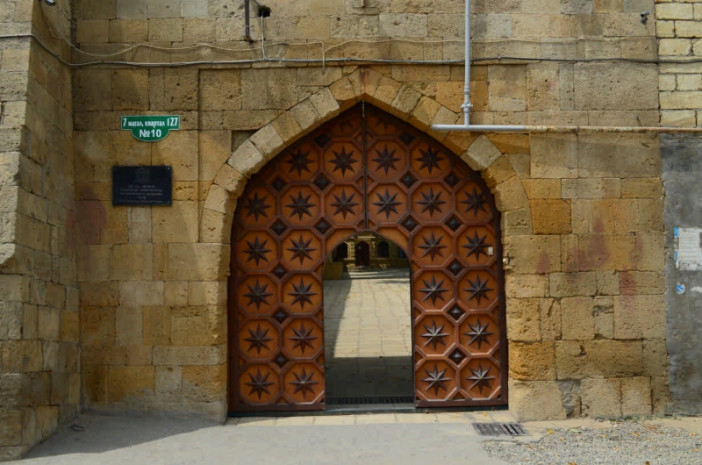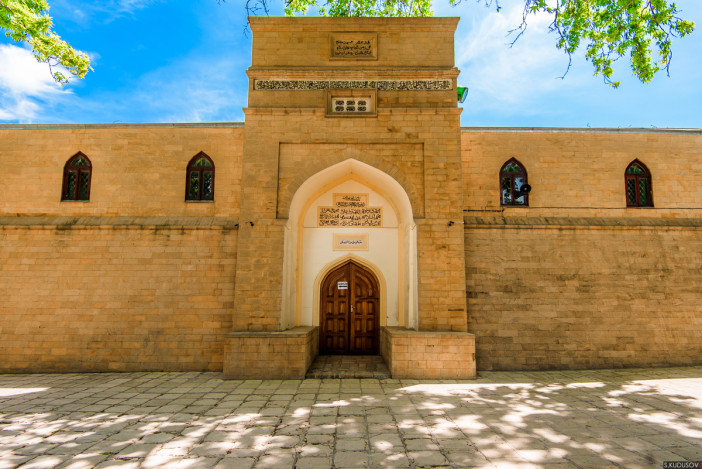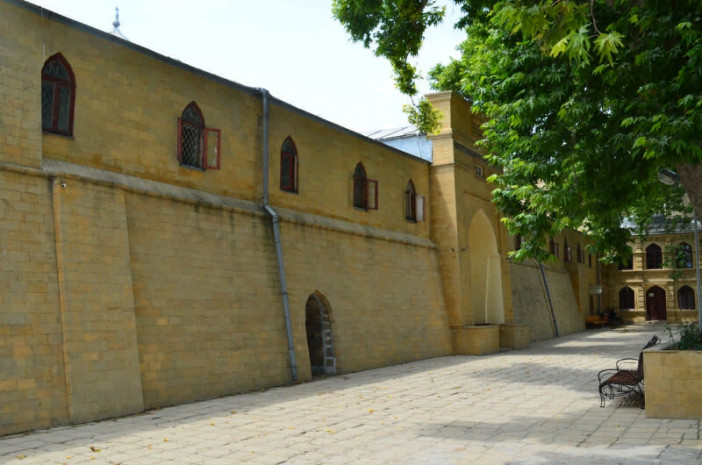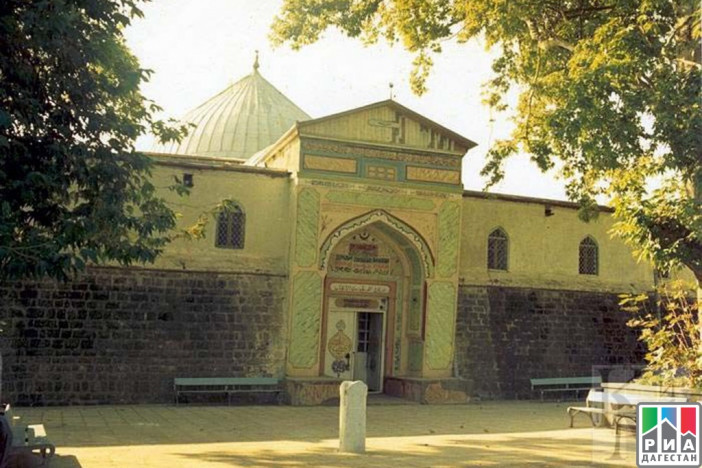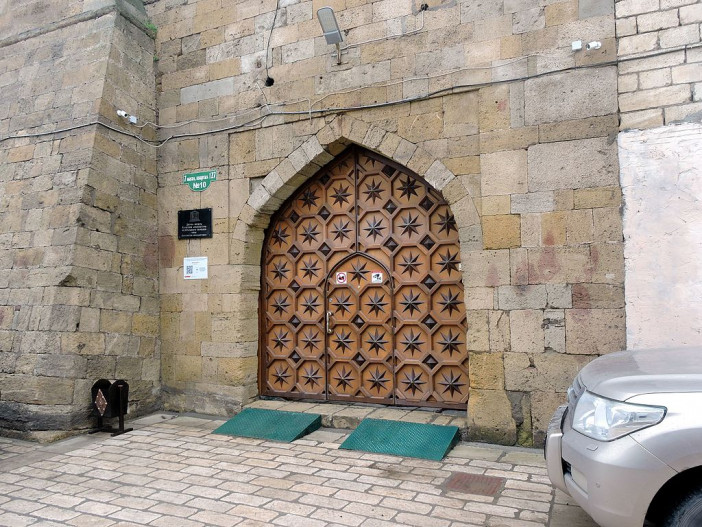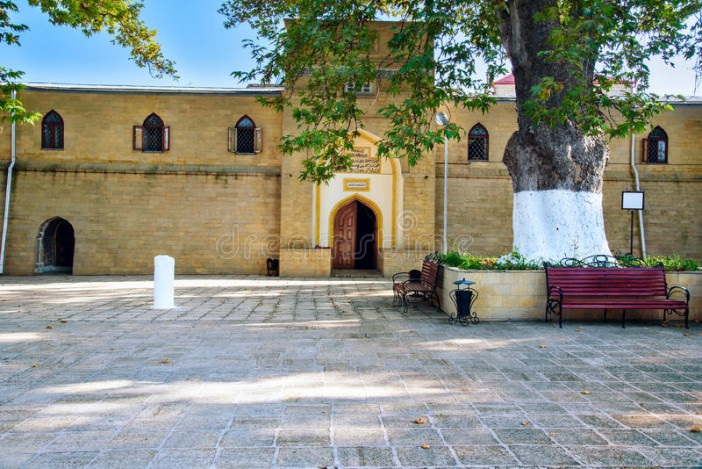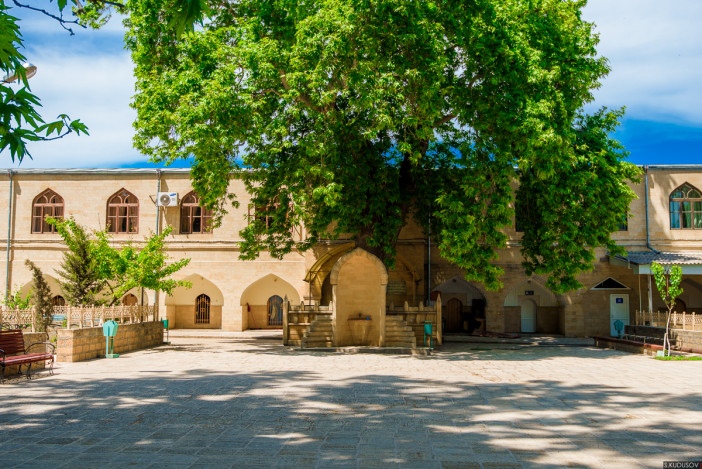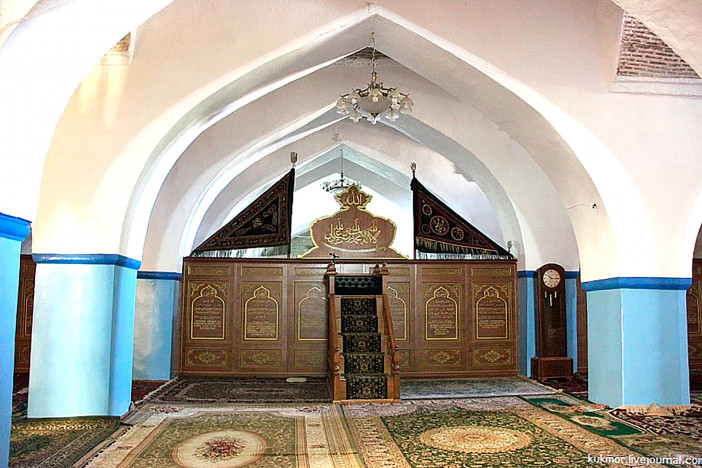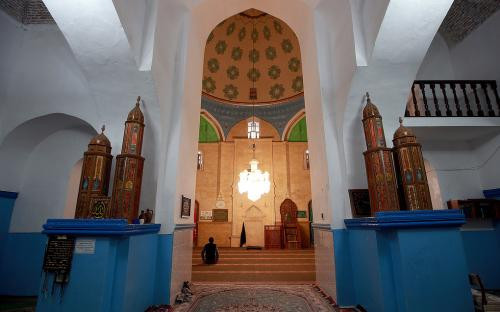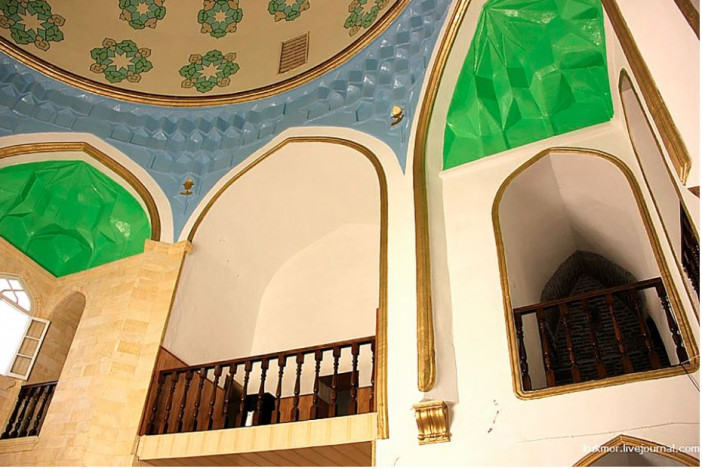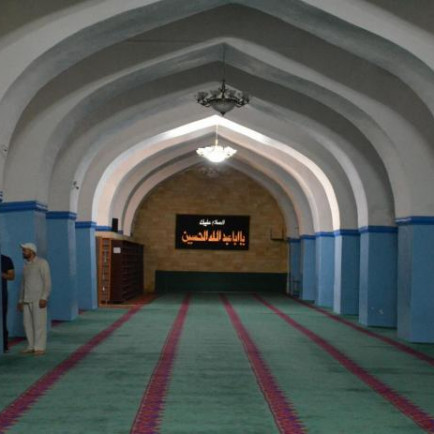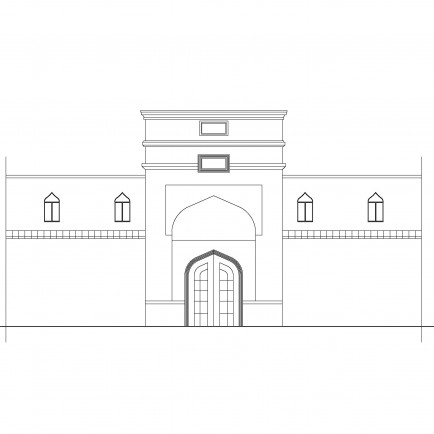Derbent Juma Mosque
History
In 733, one mosque was built in each of the 7 mahallahs of Derbent. Together with these mosques, a large mosque was built for the common Friday prayer. The number of mosques changed over time, and already in 1796 there were 15 mosques in Derbent. Above the entrance to the mosque there is an inscription stating that in 1368-1369 the mosque was restored after the earthquake by Tazhuddin from Baku. In 1815, the expansion and formation of the entire complex of the mosque was completed. In the 1930s, the mosque was closed during the atheist campaign that was launched throughout the USSR.
In 1474-1475 began the construction of a madrasa. However, its expansion and the formation of the entire complex was completed only in 1815.
From 1938 to 1943 it was rebuilt into a city prison. In 1943, by a decree from Moscow, the mosque was returned to the clergy of the city with the right to further use it for its intended purpose. In the Soviet Union years, the Juma mosque was the largest in the North Caucasus, and until recent years it remained the only one in all of South Dagestan. For this reason, believers from different regions of South Dagestan came to Derbent for Friday prayers.
In the 1940s, the charter of the mosque was developed and the adherents elected a board of 20 people. The Sunni and Shiite communities of the city have their own imams.
In 2015, in preparation for the celebration of the 2000th anniversary of Derbent, restoration work was carried out at the mosque.
Urban and Architectural
Today, the complex of the Juma Mosque consists of the main mosque, madrasa and living quarters for the clergy. At the time of construction of the mosque (733-734) it was the largest building in the city. The dimensions of the mosque are: 68 meters - from west to east, and 28 meters - from south to north. The height of the dome is 17 meters.
The interior of the mosque consists of three naves, separated by square pillars with profiled capitals. The middle nave is 6.3 meters wide, and the side naves are 4 meters wide. Lancet arches are thrown between the pillars.
The courtyard of the mosque has dimensions of 55 by 45 meters. The courtyard of the mosque is decorated with four old plane trees, by which the Juma Mosque can be recognized from anywhere in Derbent. In 2012, the plane trees of the Juma Mosque were recognized as natural monuments of all-Russian significance and taken under the protection of the Council for the Preservation of the Natural Heritage of the Nation in the Federation Council of the Federal Assembly of the Russian Federation.
Description
In the inner yard of the Juma Mosque are ancient Platanus trees that date to the 9th century. According to legend, they were planted by the famous Persian mystic and Sufi saint, Junayd of Baghdad. Today, they protect the mosque from harmful natural forces.
The four trees, which might be more than 2,000 years old, absorb moisture from the ground. Their strong root system firmly holds the soil, protecting the mosque from the consequences of earthquakes.
References
https://en.wikipedia.org/wiki/Juma_Mosque_of_Derbent
https://www.riadagestan.com/news_en/society/restoration_works_on_russia_s_ancient_mosque_finished_in_derbent/
https://www.rbth.com/arts/327141-russias-oldest-mosque
https://russia-islworld.ru/kultura//the-six-oldest-russian-mosques-2021-03-23-15452/
Details
Location
7, Ulitsa Magal, д. 10, Derbent, Republic of Dagestan, russia، 368600
Year of Build
733
Area
about 1900 m²
Drawings
Map
History
In 733, one mosque was built in each of the 7 mahallahs of Derbent. Together with these mosques, a large mosque was built for the common Friday prayer. The number of mosques changed over time, and already in 1796 there were 15 mosques in Derbent. Above the entrance to the mosque there is an inscription stating that in 1368-1369 the mosque was restored after the earthquake by Tazhuddin from Baku. In 1815, the expansion and formation of the entire complex of the mosque was completed. In the 1930s, the mosque was closed during the atheist campaign that was launched throughout the USSR.
In 1474-1475 began the construction of a madrasa. However, its expansion and the formation of the entire complex was completed only in 1815.
From 1938 to 1943 it was rebuilt into a city prison. In 1943, by a decree from Moscow, the mosque was returned to the clergy of the city with the right to further use it for its intended purpose. In the Soviet Union years, the Juma mosque was the largest in the North Caucasus, and until recent years it remained the only one in all of South Dagestan. For this reason, believers from different regions of South Dagestan came to Derbent for Friday prayers.
In the 1940s, the charter of the mosque was developed and the adherents elected a board of 20 people. The Sunni and Shiite communities of the city have their own imams.
In 2015, in preparation for the celebration of the 2000th anniversary of Derbent, restoration work was carried out at the mosque.
Urban and Architectural
Today, the complex of the Juma Mosque consists of the main mosque, madrasa and living quarters for the clergy. At the time of construction of the mosque (733-734) it was the largest building in the city. The dimensions of the mosque are: 68 meters - from west to east, and 28 meters - from south to north. The height of the dome is 17 meters.
The interior of the mosque consists of three naves, separated by square pillars with profiled capitals. The middle nave is 6.3 meters wide, and the side naves are 4 meters wide. Lancet arches are thrown between the pillars.
The courtyard of the mosque has dimensions of 55 by 45 meters. The courtyard of the mosque is decorated with four old plane trees, by which the Juma Mosque can be recognized from anywhere in Derbent. In 2012, the plane trees of the Juma Mosque were recognized as natural monuments of all-Russian significance and taken under the protection of the Council for the Preservation of the Natural Heritage of the Nation in the Federation Council of the Federal Assembly of the Russian Federation.
Description
In the inner yard of the Juma Mosque are ancient Platanus trees that date to the 9th century. According to legend, they were planted by the famous Persian mystic and Sufi saint, Junayd of Baghdad. Today, they protect the mosque from harmful natural forces.
The four trees, which might be more than 2,000 years old, absorb moisture from the ground. Their strong root system firmly holds the soil, protecting the mosque from the consequences of earthquakes.


